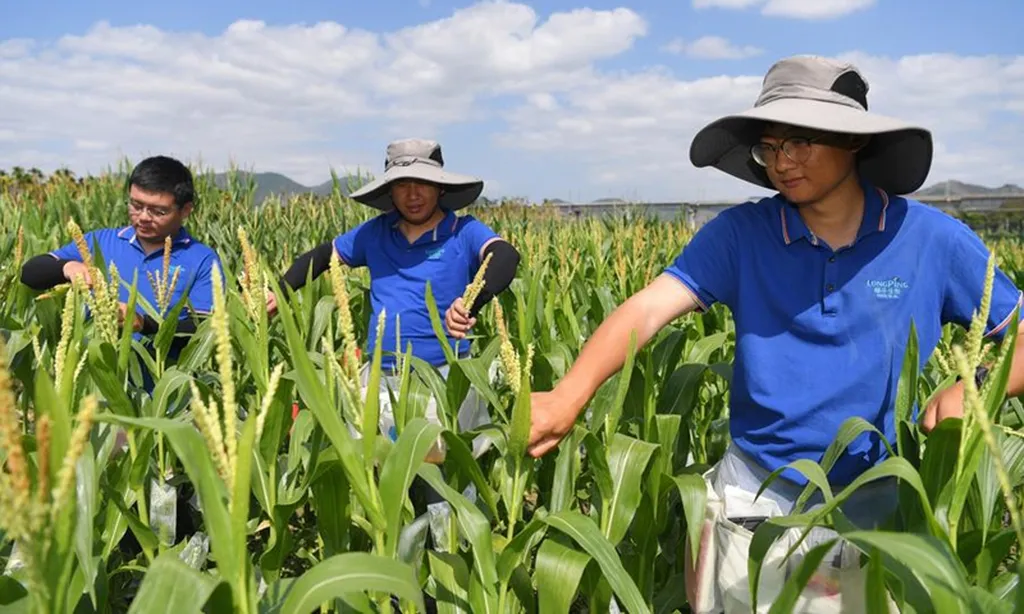In the heart of Jiangsu, China, a team of researchers led by Miao Su from Nanjing Agricultural University is revolutionizing rice cultivation with a blend of cutting-edge technology and machine learning. Their recent study, published in *Remote Sensing* (translated as “遥感” in Chinese), explores the potential of phenotyping robots equipped with multispectral and RGB cameras to estimate rice SPAD values—a critical indicator of chlorophyll content and crop health.
The traditional method of monitoring rice growth involves using SPAD meters, a process that is not only time-consuming but also labor-intensive. “This manual approach limits the scale and efficiency of data collection,” explains Su. “Our goal was to develop a non-destructive, rapid, and real-time solution that could transform how we monitor crop health and predict yield.”
The research team utilized phenotyping robots to capture high-resolution multispectral and RGB images of rice plants at various growth stages. Simultaneously, they collected SPAD values to calibrate their models. The data was then analyzed using four machine learning algorithms: random forest, partial least squares regression, extreme gradient boosting, and boosted regression trees. The random forest model, which combined vegetation indices, color indices, and texture features, emerged as the most accurate, achieving an impressive R² value of 0.83 and an RMSE of 1.593.
The implications of this research are profound for the agricultural sector. By integrating multi-sensor data with machine learning, farmers can now monitor rice SPAD values with unprecedented precision and efficiency. This technology promises to enhance crop management practices, optimize resource use, and ultimately improve yield predictions.
“Our findings provide a robust framework for high-precision, non-destructive rice phenotyping,” says Su. “This approach not only saves time and labor but also offers real-time insights that can guide precision cultivation strategies.”
The study’s success opens new avenues for the application of phenotyping robots and multi-sensor data fusion in agriculture. As the technology advances, it could be adapted for other crops, further revolutionizing the way we approach crop monitoring and management. The research team’s work is a testament to the power of innovation in addressing real-world agricultural challenges, paving the way for a more sustainable and efficient future in farming.
For the energy sector, the implications are equally significant. As the demand for bioenergy continues to grow, the need for efficient and sustainable crop cultivation becomes increasingly critical. By optimizing rice production through advanced phenotyping techniques, we can enhance the viability of bioenergy crops, contributing to a more sustainable energy future.
In summary, the research led by Miao Su and her team at Nanjing Agricultural University represents a significant leap forward in agricultural technology. Their work not only addresses the immediate needs of rice farmers but also sets the stage for broader applications in crop monitoring and precision agriculture. As we look to the future, the integration of phenotyping robots and machine learning algorithms holds immense promise for transforming the way we cultivate and manage our crops, ultimately contributing to a more sustainable and efficient agricultural landscape.

